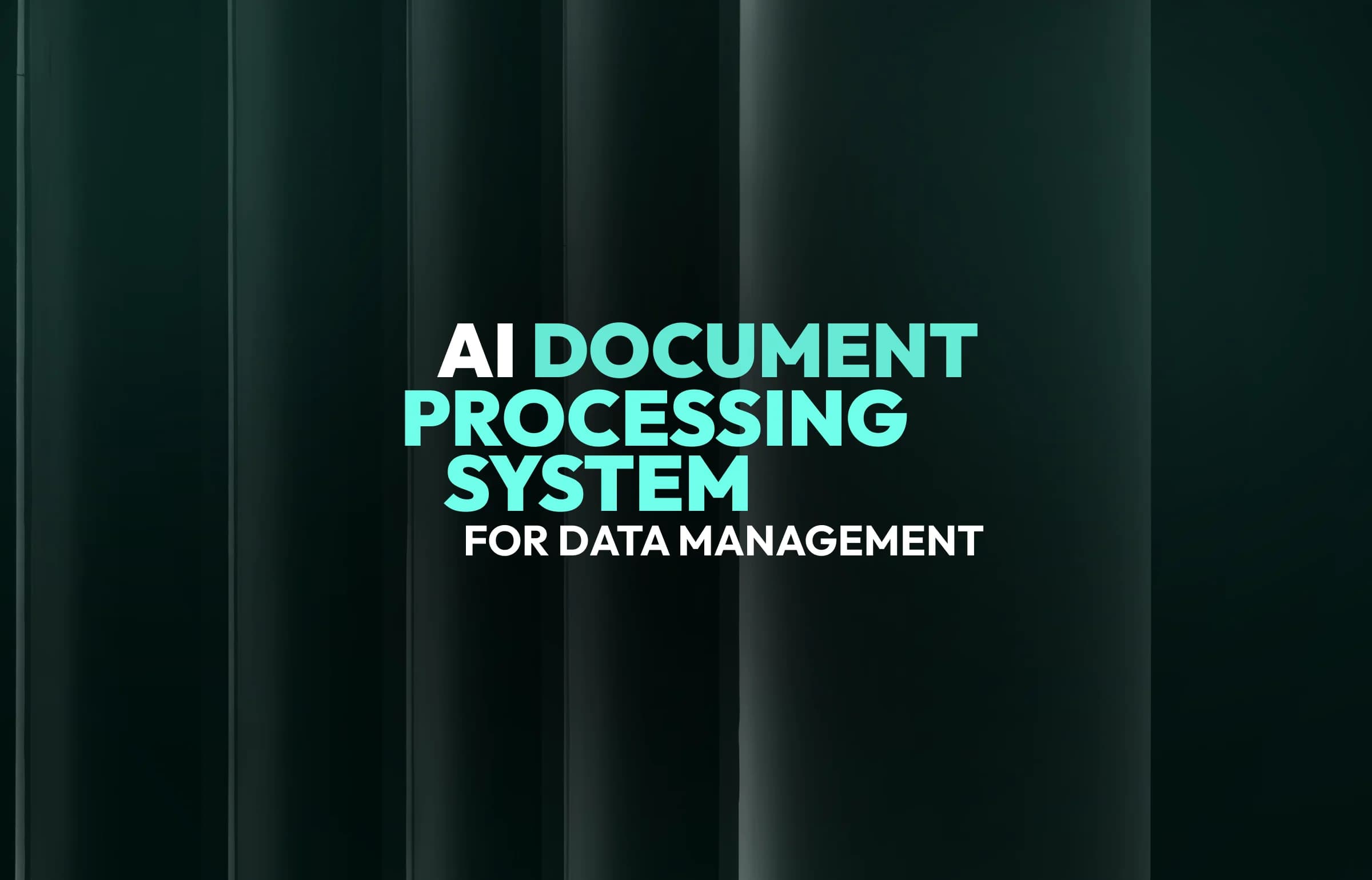
All How to Launch a Bitcoin DeFi Ecosystem: Guide for 2025
Updated:April 28, 202510 min read
In this article, you’ll learn about: the meaning of Bitcoin DeFi, it’s comparison with Ethereum DeFi, their technical features, challenges, and use cases. Read on for more!
Intro
Bitcoin has always been the leader in the world of digital currency. But when it comes to decentralized finance (DeFi), Bitcoin has mostly stayed on the sidelines. Ethereum has been the go-to platform for DeFi applications, leaving many to wonder – can Bitcoin get in the game too?
Well, here’s the good news: it can. Bitcoin DeFi, or BTCfi, is starting to make waves. It combines Bitcoin’s security and decentralization with the power of DeFi. But how does it work? And how is it different from Ethereum’s DeFi? Let’s cover it in detail.
What Is Bitcoin DeFi (BTCFi) And How Does It Work?
Bitcoin DeFi, or BTCFi, is a way to bring Bitcoin into the world of decentralized finance. In simple terms, it implies using Bitcoin to access financial services like lending, borrowing, trading, and earning interest without relying on traditional (centralized) financial institutions like banks, insurance companies, or brokerage firms.
Bitcoin is great for secure transactions, but it doesn’t have the smart contract features that make DeFi so powerful. So, how does BTCFi work? To use Bitcoin in DeFi, you need to wrap it into a token that can be used on DeFi platforms. This is called a “wrapped Bitcoin” (wBTC). It’s an ERC-20 token that’s backed 1:1 by Bitcoin. So, while you’re using it in DeFi, you still own the Bitcoin behind it.
BTCFi uses smart contracts to enable transactions and financial activities. These are self-executing contracts with the terms of the agreement directly written into code. Unlike traditional finance, these contracts run automatically.
With wrapped Bitcoin and smart contracts, you can now use Bitcoin to access DeFi platforms. You can lend your Bitcoin and earn interest, borrow assets, or even trade it. And you don’t need a central authority controlling things.
Bitcoin DeFi Vs. Ethereum DeFi
Bitcoin and Ethereum are both dominant forces in the crypto world, but their approach to decentralized finance (DeFi) differs significantly.

Bitcoin was created as an alternative to physical or fiat currencies. Ethereum is built for executing complex smart contracts and decentralized applications (dApps), which are seen as key components of the emerging (and theoretical) infrastructure for Web3, the future of the internet.
Bitcoin relies on a consensus mechanism known as proof of work (PoW), where miners compete to solve complex cryptographic puzzles before transactions are validated and added to the blockchain. Ethereum, however, transitioned to proof of stake (PoS) in September 2022, as part of a series of upgrades intended to improve both the network’s security and sustainability. A major feature of this transition is danksharding, a process designed to enhance scalability, and it will continue to be refined through future updates.
One of the major drawbacks of proof of work is its significant energy consumption due to the intense computational power required. Proof of stake addresses this issue by replacing this computational work with staking – validators now participate by locking up their cryptocurrency, which makes the system far more energy-efficient. Instead of miners, PoS uses validators who stake their crypto to gain the right to create new blocks.
Technical Features of DeFi on Bitcoin
Bitcoin’s network is built for secure, peer-to-peer transactions. However, to enable decentralized finance (DeFi), additional tools and layers are needed for smart contracts and other financial services.
Sidechains
Sidechains, like Rootstock, allow Bitcoin to interact with smart contracts. Rootstock is a sidechain that works alongside Bitcoin’s blockchain, using Bitcoin’s security features. When Bitcoin is sent to Rootstock, it’s converted into RBTC (Rootstock Bitcoin), which is then used for smart contracts on that sidechain.
Layer-2 Solutions
Layer-2 solutions, such as the Lightning Network, help scale Bitcoin by enabling faster and cheaper transactions. These solutions work off-chain, meaning they allow multiple transactions to occur without overcrowding the main Bitcoin network. For DeFi, this translates to quicker and more cost-effective financial operations.
Stacks
Stacks is an independent blockchain built on Bitcoin. It gives Bitcoin holders new ways to use their BTC, unlocking new opportunities for profit. Stacks operates using a unique "proof of transfer" consensus mechanism, which secures its blockchain by leveraging Bitcoin's proof of work system.
Challenges and Limitations of DeFi on Bitcoin
While there is potential for DeFi on Bitcoin, there are several challenges and limitations due to the design of the Bitcoin blockchain.
1. Tech Challenges
Sidechains like RSK and layer-2 solutions like the Lightning Network show promise, but creating and maintaining these systems securely is difficult. They require strong infrastructure and security to protect users and their transactions. Moreover, Bitcoin-based DeFi solutions are isolated, which can limit their usefulness compared to more connected ecosystems that allow for better integration with other blockchains.
Bridges that connect Bitcoin to other blockchains or sidechains are essential for transferring assets and ensuring interoperability. However, these bridges are vulnerable to hacking, making them potential points of failure.
2. Design Limitations
Bitcoin’s scripting language, called Script, is intentionally simple. It’s designed for securing transactions and controlling access to Bitcoin, but it’s not as flexible or powerful as smart contract languages like Solidity on Ethereum. This limits the ability to build complex DeFi apps directly on Bitcoin without relying on second-layer solutions or sidechains.
Additionally, while solutions like the Lightning Network help with scalability for financial transactions, Bitcoin is still less suited to handle complex DeFi applications compared to blockchains designed specifically for DeFi. Bitcoin transactions can also be slow and expensive, especially during times of high network congestion.
3. Adoption Challenges
Using DeFi on Bitcoin can be more complicated than on other platforms. Understanding sidechains, bridges, and layer-2 solutions can be overwhelming, especially for non-technical users. For wider adoption, users need to grasp both the opportunities and risks that come with DeFi on Bitcoin.
Moreover, the constantly changing regulatory landscape creates uncertainty. Potential legal restrictions can affect the growth and development of DeFi services, including those built on Bitcoin.
Role of Smart Contracts in Decentralized Finance
Powered by blockchain, smart contracts are transparent and unchangeable (meaning they can’t be altered once recorded). They cut out the middleman and build trust in every transaction. This makes them more secure as compared to traditional financial systems often vulnerable to fraud, censorship, or tampering.

Smart contracts make financial transactions simpler and faster. They eliminate manual processes, following the rules written in their code. Transactions happen directly and automatically when conditions are met. This saves time, cuts costs, and eliminates counterparty risk. Without paperwork or delays, things move smoothly. And since there are no extra fees from third parties, using DeFi becomes more affordable and cost-effective.
Smart contracts let developers build customizable, programmable financial tools for DeFi. They can power a variety of dApps for lending, borrowing, trading, or earning rewards through yield farming. These tools are flexible, so they can be customized to fit different needs. That means more options and innovation for anyone using DeFi.
Smart contracts let everyone involved have a say. They can set up voting rules, so decisions are made by the community, not a central authority. Once the vote is done, the contract takes care of the rest and automatically carries out the agreed action.
Every move made by a smart contract is saved on the blockchain, where anyone can see it. This means every decision, every transaction, is completely visible and can’t be changed. This system removes the need for centralized authorities, giving power to the community while maintaining accountability.
Smart contracts make it easy for different DeFi protocols and apps to work together. This means decentralized applications can smoothly connect with each other, creating more complex financial systems and new possibilities.
Developers can mix and match different protocols, using each one's features to build unique solutions. This collaboration sparks innovation and paves the way for fresh financial models that weren't possible before.
Ready to build secure and efficient smart contracts for your project?
Discover our smart contracts development services and start creating innovative, secure solutions
Use Cases of Bitcoin DeFi
The use cases for Bitcoin DeFi are similar to traditional DeFi, but they are built on the Bitcoin network and typically use BTC as the primary asset.
Here are some potential use cases of BTCFi.
Bitcoin-Native Assets
Digital assets created directly on the Bitcoin blockchain, rather than being wrapped or pegged to Bitcoin from other networks. These assets are designed to utilize Bitcoin’s security and decentralization while enabling additional features like smart contracts and decentralized finance operations. For example, Bitcoin-native assets can represent a user’s Bitcoin holdings in a more flexible, programmable form.
Wrapped Bitcoin
An ERC-20 token that represents Bitcoin on the Ethereum network. One wBTC is always backed by one Bitcoin, allowing users to bring Bitcoin into the Ethereum ecosystem. This is useful for participating in Ethereum-based decentralized applications and DeFi protocols that require ERC-20 tokens, enabling Bitcoin holders to use their assets across different blockchains without selling or converting them.
Staking
Allows Bitcoin holders to lock up their BTC in smart contracts to earn rewards or interest. While Bitcoin itself doesn’t use proof of stake (PoS), certain platforms allow Bitcoin holders to stake their Bitcoin on sidechains or layer-2 networks that offer staking rewards. This enables Bitcoin holders to earn passive income while maintaining exposure to Bitcoin’s value.
Bitcoin Layer-2 Networks
Sit on top of the Bitcoin blockchain and offer faster and cheaper transactions. They help scale Bitcoin by allowing off-chain transactions while still relying on the security of the Bitcoin mainnet. For Bitcoin DeFi, these networks enable more efficient and cost-effective execution of transactions, making decentralized financial activities faster and more accessible.
Borrowing and Lending
Users can lend their BTC to others in exchange for interest, or borrow BTC by providing collateral. DeFi lending platforms for Bitcoin enable users to engage in decentralized lending without the need for traditional financial institutions. The terms of borrowing and lending are typically governed by smart contracts, ensuring security and transparency.
Decentralized Exchanges (DEXs)
Allow users to trade their assets directly with others, without the need for a centralized authority. These exchanges are powered by smart contracts and automated market makers (AMMs), ensuring that users can trade securely while maintaining control over their funds.
How to Launch a Bitcoin DeFi Ecosystem
Here’s a simple guide to get started with a Bitcoin DeFi.
Step 1. Understand and Choose the Right Technology
Bitcoin wasn’t initially designed with DeFi in mind. So, to enable DeFi, you’ll need to rely on additional technologies like sidechains, layer-2 solutions, or wrapped Bitcoin. You’ll also need to explore smart contract platforms that work with Bitcoin, such as Rootstock or the Lightning Network.
- Sidechains allow Bitcoin to interact with smart contracts. This will enable the creation of decentralized applications and other DeFi protocols that interact with Bitcoin.
- Layer-2 Solutions help scale Bitcoin transactions, making them faster and more affordable for DeFi applications.
- Wrapped Bitcoin lets users bring BTC into Ethereum-based DeFi protocols. By converting BTC to wBTC, you open up Bitcoin to Ethereum's ecosystem and all its DeFi applications.
Step 2. Develop Core DeFi Products
Build the key DeFi products that your ecosystem will offer, such as decentralized exchanges where users can trade BTC without intermediaries, lending and borrowing platforms for users to lend their BTC or borrow from others, and staking protocols that allow users to lock up their BTC and earn rewards.
To better understand how these products operate within the ecosystem, refer to the diagram below, which illustrates the core mechanisms of a DeFi protocol:

Step 3. Implement Smart Contracts
You’ll need to integrate or develop smart contracts that can handle various financial operations, such as lending, borrowing, and trading.
Step 4. Ensure Security
Make sure to audit smart contracts thoroughly before deploying them, use robust encryption and multi-signature wallets to secure funds, and implement insurance mechanisms to protect users in case of bugs or hacks.
Step 5. Build Community and Partnerships
Engage with the Bitcoin community (e.g., on Reddit or Bitcoin Forum) and other blockchain developers to build trust and attract users. Partnerships with other DeFi platforms can also help improve the reach and functionality of your ecosystem.
Step 6. Offer Incentives and Governance
Attract users by offering rewards, such as interest on staked BTC or tokens for liquidity providers. Implement a decentralized governance system where users participate in decision-making in the future direction of the ecosystem, often via governance tokens.
Step 7. Ensure Regulatory Compliance
DeFi is still a gray area in many jurisdictions. Make sure you understand the legal landscape and comply with relevant regulations, especially around anti-money laundering (AML) and know-your-customer (KYC) practices if necessary.
Step 8. Ensure Your Platform Is User-Friendly
Many Bitcoin holders are not familiar with DeFi, so simplifying the onboarding process is important. Offer tutorials, clear instructions, and customer support to help users navigate the platform.
Step 9. Launch and Scale
Start with a soft launch to a small group of users and gather feedback. Over time, improve the platform based on user input, add new features, and scale up.
Building a Bitcoin DeFi ecosystem is no small feat, but with the right technology, products, and community focus, you can create a thriving decentralized financial ecosystem on Bitcoin.
What Is the Future of Bitcoin DeFi?
It's clear that DeFi is making its way into the Bitcoin network. However, DeFi on Bitcoin is still a bit trickier compared to platforms like Ethereum and other smart contract networks. NFTs on Bitcoin are still in early stages, but since Bitcoin is the foundation of cryptocurrencies, it's only a matter of time before developers start flocking to Bitcoin to create new financial tools and platforms.
For DeFi on Bitcoin to really take off, it will need to offer unique decentralized finance apps that can't be found on other blockchains, attract a large user base, and provide clear advantages over existing DeFi solutions.
Charles Hoskinson, the founder of Cardano, a public decentralized blockchain platform, predicts that Bitcoin's decentralized finance ecosystem will surpass rival systems in the future, becoming the dominant force in the crypto world. He believes Bitcoin will not only continue to be a store of value but also evolve into a powerful tool for DeFi, driving exponential growth and attracting institutional investments.
The DeFi in the Bitcoin ecosystem will eclipse all others within 24–36 months, thanks to its unprecedented scale.
Summary
The rise of Bitcoin DeFi represents a new frontier in decentralized finance. While the integration of Bitcoin into DeFi presents some challenges, technological advancements are paving the way for a more connected and versatile ecosystem. As the technology and ecosystem continue to evolve, the future of Bitcoin DeFi holds immense potential, enabling users to access the decentralized financial services they’ve long been seeking.



